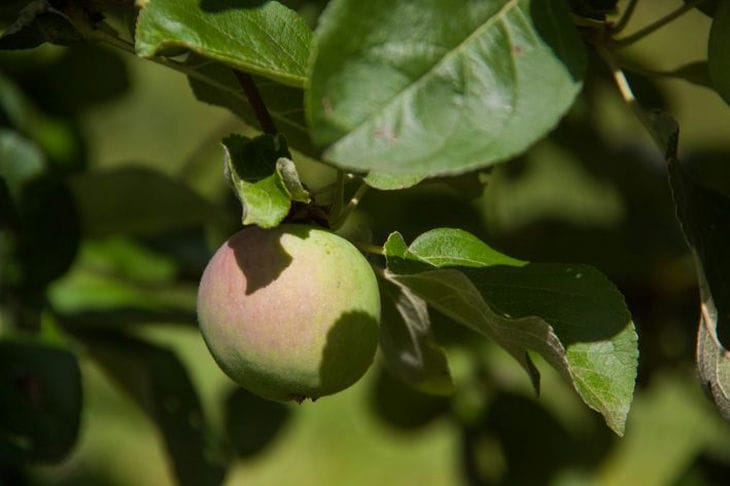Why Apples Rotting Right on the Tree: The Secret Life of Garden Pests
Gardeners often encounter a sad sight: apples that begin to rot right on the tree.
This phenomenon not only deprives the harvest, but also raises many questions.
The reasons for this phenomenon are varied and often related to a combination of factors, including weather conditions, diseases and pests.
Fungal diseases
One of the main causes of apple tree rot is fungal diseases. Moniliosis, or fruit rot, caused by fungi of the genus Monilinia, is especially common.
This pathogen enters the fruit through tiny breaks in the skin and spreads quickly, causing brown rot.

In conditions of high humidity, fungal spores are easily carried by wind and insects, infecting neighboring fruits.
Insect pests
Codling moths and other insect pests can cause apples to rot on the tree.
The larvae of these insects penetrate the fruit, damaging its tissues and creating favorable conditions for the development of putrefactive bacteria and fungi.
Even minor damage to the apple skin can become an entry point for infection.
Weather conditions
Adverse weather conditions play a significant role in the development of apple rot.
Prolonged rains, high humidity and sudden temperature changes create an ideal environment for the reproduction of pathogenic microorganisms.
Additionally, strong winds or hail can damage the skin of the fruit, making it more vulnerable to infection.
Physiological disorders
Certain physiological disorders, such as bitter pit or vitreous, can cause apples to rot prematurely.
These conditions are often associated with a disruption of the tree's mineral nutrition, especially a lack of calcium. Affected fruits become more susceptible to fungal diseases and bacterial infections.
Overripening of fruits
If apples are left on the tree too long after they reach maturity, they begin to overripe. Overripe fruits are softer and sweeter, making them attractive to insects and more susceptible to fungal infections. In addition, the natural aging processes of the fruit tissues can contribute to the development of rot.
Insufficient tree care
Improper care of the apple tree can indirectly contribute to fruit rot. Insufficient pruning leads to thickening of the crown, which worsens air circulation and increases humidity around the fruit.
Inadequate nutrition of the tree weakens its immunity, making it more susceptible to diseases and pests.
Chemical damage
Improper use of pesticides or other chemicals can damage apple skins, creating microcracks that allow pathogens to enter.
In addition, excessive use of chemicals can disrupt the natural balance of microorganisms on the surface of fruits, reducing their natural defenses.
Genetic factors
Some apple varieties are genetically more susceptible to certain diseases or physiological disorders that can cause fruit to rot on the tree.
Selecting resistant varieties can significantly reduce the risk of yield loss due to rot.
Prevention and control
Preventing apple tree rot requires a comprehensive approach.
Regular pruning to improve crown ventilation, timely removal of fallen and damaged fruits, proper tree nutrition and preventive treatments against pests and diseases can significantly reduce the risk of rot development.
It is also important to observe the harvesting dates, not allowing the fruits on the tree to become overripe.
Understanding the reasons why apples rot on the tree allows gardeners to take effective measures to protect their crops.
Timely detection of the problem and proper care of the tree will help maintain the health of the garden and ensure a rich harvest of high-quality fruits.
